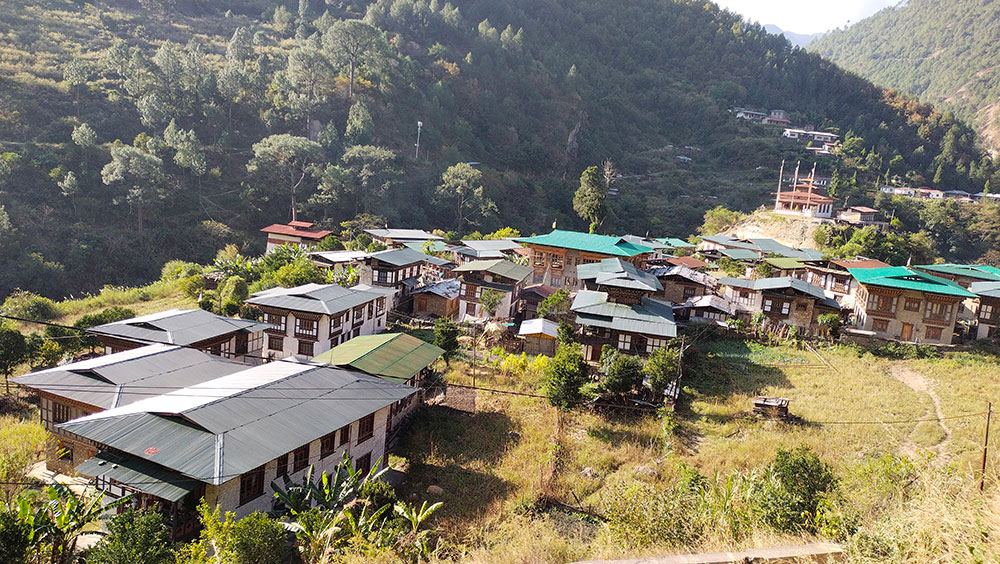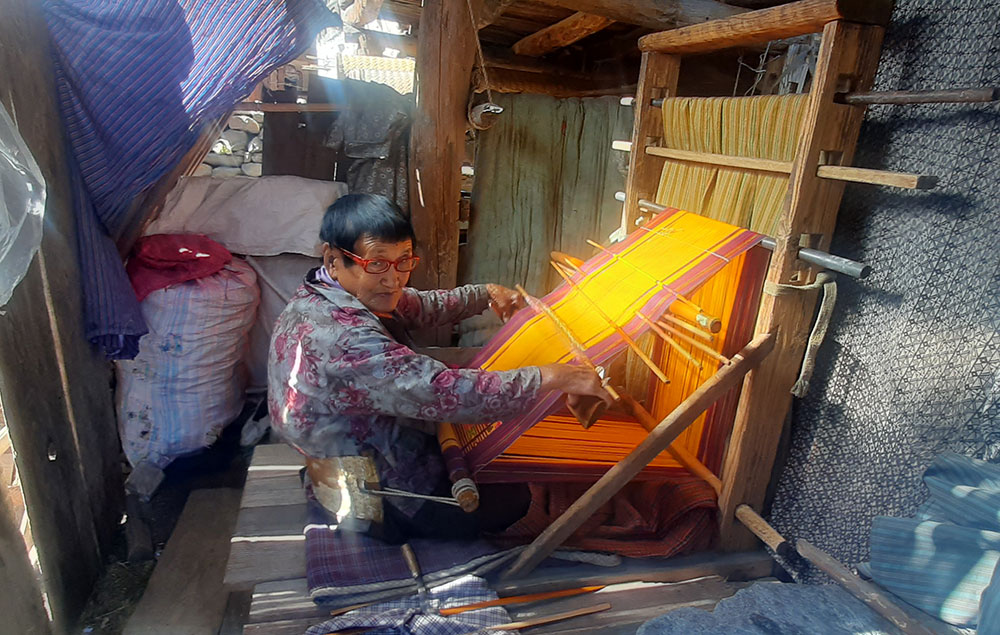Thinley Namgay
At the age of 89, Sithar Lhamo continues her dedication to weaving in Lhuentse’s Khoma village, renowned for its Kishuthara. Commencing her weaving journey at the age of 13, Sithar now holds the title of the oldest weaver in Khoma.
Sithar exemplifies a profound belief in weaving, considering it not only a skill but also an integral part of life, tradition, and a viable source of income. Over the past 76 years, she has relied primarily on her weaving craft.
Following her morning prayers, Sithar adheres to her consistent weaving routine, from 9am to 5pm. Despite her advanced age and diminishing eyesight, she now focuses on crafting simpler items like rachu and keyra, which do not demand intricate patterns like the renowned Kishuthara.

Khoma village
Sithar attests to the convenience provided by the community, expressing gratitude for the consistent demand for her products, making it sustainable for her. Having been a prominent Kishuthara weaver for the last five to six decades, Sithar joyfully observes the continued flourishing of Kishuthara culture in Khoma, with young girls actively participating in the tradition.
She emphasises the role of parents in the village, instilling the art of weaving in their daughters from an early age. Sithar believes that, amidst limited income sources, weaving significantly enhances the quality of life in the village.
Reflecting on the past, Sithar recalls the challenges villagers faced, traveling by foot to Samdrupjongkhar to buy yarn, a month-long endeavor. Presently residing alone in the village after the loss of her daughter, Sithar champions self-reliance, advocating that as long as one can work, dependency on others should be minimised.
However, her concern lies in the absence of someone to care for her during illness, as her relatives reside in distant places. Other young weavers in the village admire Sithar’s determination and hard work, considering her an exemplary figure for both villagers and visitors.
Sithar perceives positive transformations in the quality and patterns of Kishuthara today, attributing it to improved raw materials and heightened creativity. Currently, around 40 Kishuthara weavers contribute to Khoma’s weaving tradition, with every girl and woman engrossed in the craft during what they consider the peak season.
Situated on the route to the sacred Singye Dzong, Khoma experiences a constant influx of customers, including Bhutanese nationals and tourists on their way to Singye Dzong. The cost of a Kishuthara stands at a minimum of Nu 120,000, requiring a minimum of five months to complete. This thriving weaving culture not only sustains traditions but also contributes to the economic vitality of Khoma.


